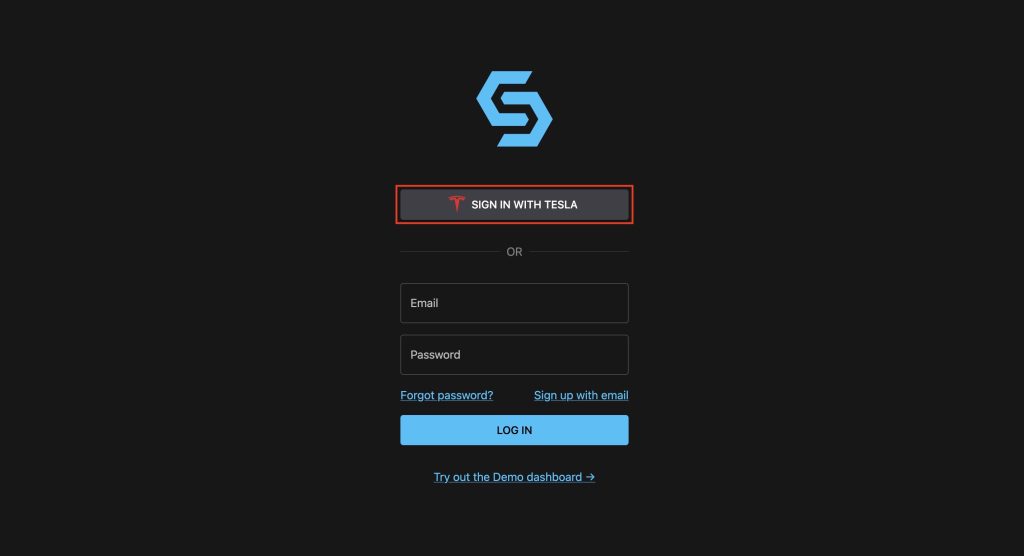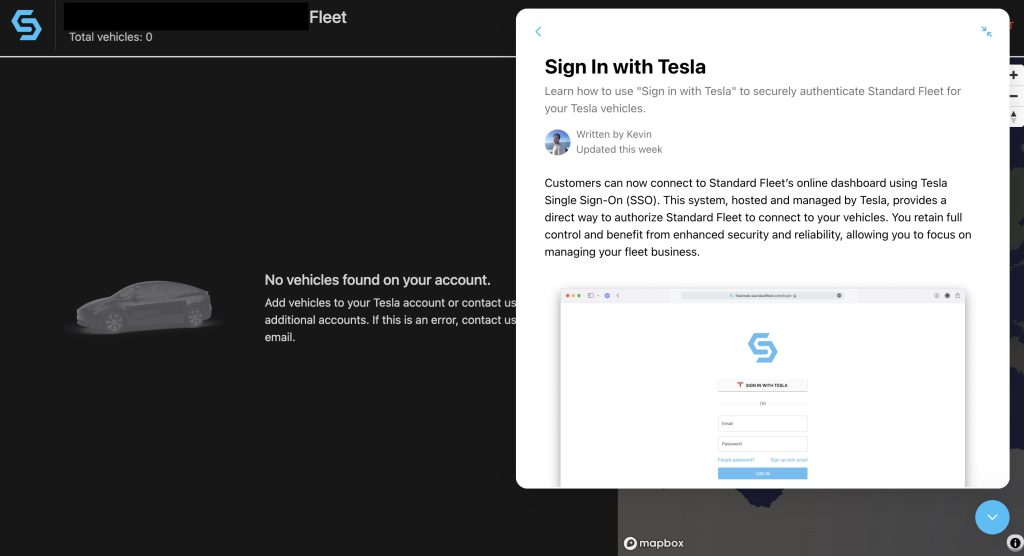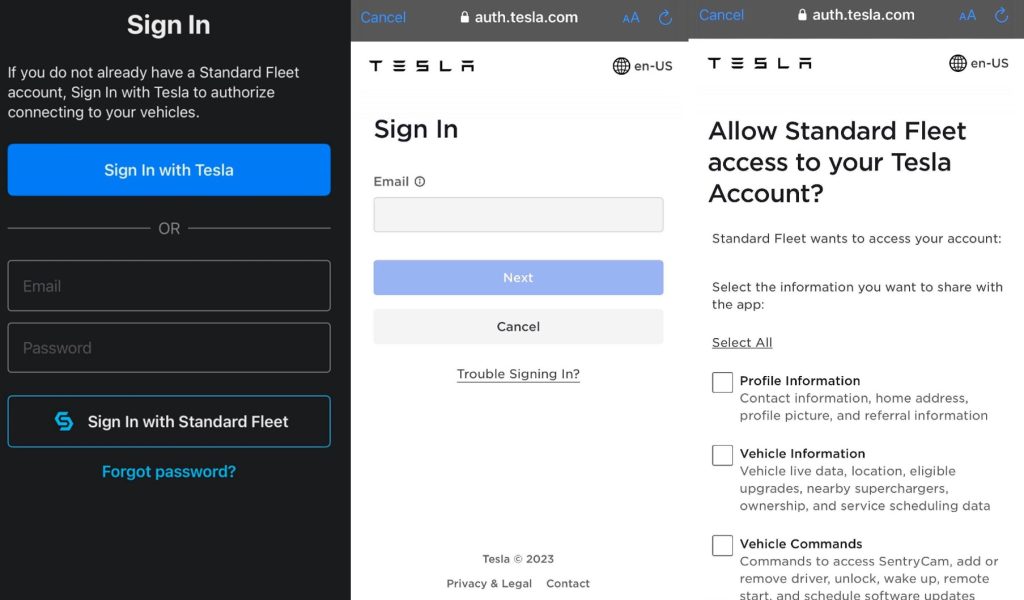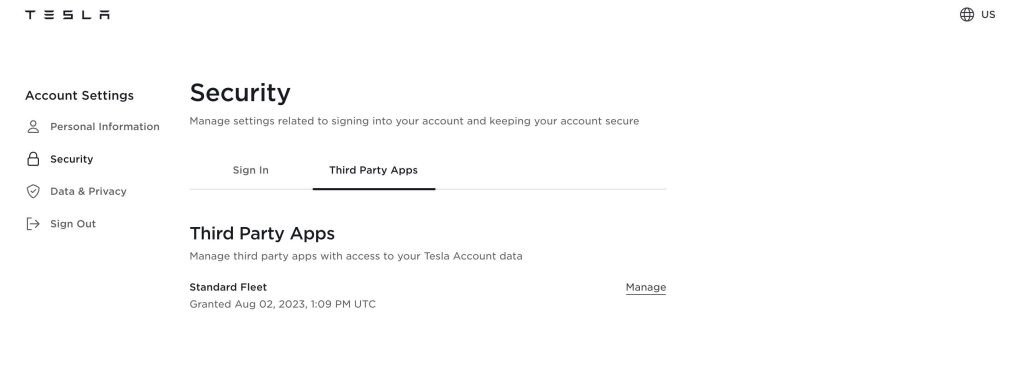**UPDATED with a comment from Standard Fleet CEO and founder David Hodge.
Tesla appears to have quietly rolled out its support for official third-party applications. The first third-party app is Standard Fleet, a fleet management platform that’s currently being used by a number of Tesla ride-sharing and EV-sharing companies across the globe.
Standard Fleet is the brainchild of Apple veteran and longtime Tesla owner David Hodge. Launched last year, the platform seeks to provide online and mobile tools to ensure that electric vehicle fleets are managed in an efficient and profitable manner. A key advantage offered by Standard Fleet lies in the fact that it’s software-based, so fleet owners are not required to purchase any cumbersome third-party devices just to monitor and manage their fleet.
Since its launch, Standard Fleet has received support from a number of notable Tesla-related businesses. These include Revel in New York, which operates a fleet of Model Y crossovers for ride-sharing, as well as MisterGreen Electric Lease, which manages over 5,000 Teslas in Europe. Arizona-based EV Access, whose fleet is nearing the 1,000-unit mark, has also noted that it uses Standard Fleet for its business.
Tesla Access
As observed by Teslarati, Standard Fleet’s login page now shows a button that allows users to connect to the fleet management platform’s online dashboard using a Tesla Single Sign-On (SSO) system. Clicking “Sign in with Tesla” directs users to Tesla’s authorization page, where they can grant Standard Fleet access to their Tesla profile information, vehicle location, data, and commands. Once users grant the necessary permissions, they will be directed to Standard Fleet’s dashboard, where they can manage their Tesla fleet.


Users that provide Standard Fleet with the necessary permissions to access their vehicle data could be assured, as the EV management platform notes that Tesla users could revoke access to their accounts at any time at Tesla.com. Standard Fleet also notes that it connects to Tesla through OAuth, so the company only receives an “access token” from the EV maker. This means that Standard Fleet does not access users’ Tesla passwords at all.

While Tesla is yet to formally announce its support for Standard Fleet as an official third-party app as of writing, the Tesla login buttons on the EV management platform’s webpage and mobile app seem confirmation enough. The fact that Standard Fleet is also listed in Tesla’s “Third Party Apps” menu is just icing on the cake.

Electric Fleets
Standard Fleet’s support as Tesla’s first third-party app seems to be coming at the right time. As noted by Standard Fleet founder David Hodge, it’s only a matter of time before most vehicle fleets become electric. EVs just make sense for fleets, as they are easy to track, maintain, and support. With this in mind, having Tesla’s first third-party app be a fleet management system makes sense, as it suggests that the company is determined to support customers that operate businesses using its electric cars.
The Model Y is already an excellent fleet vehicle, with its stellar performance, ample range, and space. The Cybertruck, at least when Tesla ramps its production and stabilizes its cost, would likely be an equally good or even better fleet vehicle. There is definitely some demand, after all, for a reasonably-priced rugged vehicle that requires minimal maintenance and is easy to track. Future electric cars like the Robovan and the affordable Tesla that will be produced at Gigafactory Mexico would likely be excellent fleet units as well.
Standard Fleet founder and CEO David Hodge issued a brief comment about the EV management platform being a third-party application for Tesla. “Teslas are fantastic fleet vehicles. We have nearly 100,000 EVS connected and are thrilled to make this step to improve how we can support our innovative EV Fleet customers,” Hodge said in a comment to Teslarati.
Tesla App Store
The arrival of Standard Fleet as Tesla’s first third-party bodes well for a dedicated App Store for the company’s electric cars. Teslas, after all, are akin to advanced computers on wheels. They already function quite a lot like modern smartphones in the way that they improve and change through over-the-air software updates. An App Store for the company then makes sense as a next step for Tesla.
Tesla CEO Elon Musk has referenced the idea of a dedicated Tesla App Store in the past. During a 2019 interview with Ryan McCaffrey of the Ride the Lightning podcast, Musk noted that as the number of Teslas on the road grows, it makes more sense to consider the development of “games and other applications for Tesla.” Ultimately, Standard Fleet is just the beginning, so it would be pretty interesting to see the next third-party applications that Tesla would be supporting in the near future.
Don’t hesitate to contact us with news tips. Just send a message to simon@teslarati.com to give us a heads-up.

Elon Musk
Elon Musk and Tesla AI Director share insights after empty driver seat Robotaxi rides
The executives’ unoccupied tests hint at the rapid progress of Tesla’s unsupervised Robotaxi efforts.

Tesla CEO Elon Musk and AI Director Ashok Elluswamy celebrated Christmas Eve by sharing personal experiences with Robotaxi vehicles that had no safety monitor or occupant in the driver’s seat. Musk described the system’s “perfect driving” around Austin, while Elluswamy posted video from the back seat, calling it “an amazing experience.”
The executives’ unoccupied tests hint at the rapid progress of Tesla’s unsupervised Robotaxi efforts.
Elon and Ashok’s firsthand Robotaxi insights
Prior to Musk and the Tesla AI Director’s posts, sightings of unmanned Teslas navigating public roads were widely shared on social media. One such vehicle was spotted in Austin, Texas, which Elon Musk acknowleged by stating that “Testing is underway with no occupants in the car.”
Based on his Christmas Eve post, Musk seemed to have tested an unmanned Tesla himself. “A Tesla with no safety monitor in the car and me sitting in the passenger seat took me all around Austin on Sunday with perfect driving,” Musk wrote in his post.
Elluswamy responded with a 2-minute video showing himself in the rear of an unmanned Tesla. The video featured the vehicle’s empty front seats, as well as its smooth handling through real-world traffic. He captioned his video with the words, “It’s an amazing experience!”
Towards Unsupervised operations
During an xAI Hackathon earlier this month, Elon Musk mentioned that Tesla owed be removing Safety Monitors from its Robotaxis in Austin in just three weeks. “Unsupervised is pretty much solved at this point. So there will be Tesla Robotaxis operating in Austin with no one in them. Not even anyone in the passenger seat in about three weeks,” he said. Musk echoed similar estimates at the 2025 Annual Shareholder Meeting and the Q3 2025 earnings call.
Considering the insights that were posted Musk and Elluswamy, it does appear that Tesla is working hard towards operating its Robotaxis with no safety monitors. This is quite impressive considering that the service was launched just earlier this year.
Elon Musk
Starlink passes 9 million active customers just weeks after hitting 8 million
The milestone highlights the accelerating growth of Starlink, which has now been adding over 20,000 new users per day.

SpaceX’s Starlink satellite internet service has continued its rapid global expansion, surpassing 9 million active customers just weeks after crossing the 8 million mark.
The milestone highlights the accelerating growth of Starlink, which has now been adding over 20,000 new users per day.
9 million customers
In a post on X, SpaceX stated that Starlink now serves over 9 million active users across 155 countries, territories, and markets. The company reached 8 million customers in early November, meaning it added roughly 1 million subscribers in under seven weeks, or about 21,275 new users on average per day.
“Starlink is connecting more than 9M active customers with high-speed internet across 155 countries, territories, and many other markets,” Starlink wrote in a post on its official X account. SpaceX President Gwynne Shotwell also celebrated the milestone on X. “A huge thank you to all of our customers and congrats to the Starlink team for such an incredible product,” she wrote.
That growth rate reflects both rising demand for broadband in underserved regions and Starlink’s expanding satellite constellation, which now includes more than 9,000 low-Earth-orbit satellites designed to deliver high-speed, low-latency internet worldwide.
Starlink’s momentum
Starlink’s momentum has been building up. SpaceX reported 4.6 million Starlink customers in December 2024, followed by 7 million by August 2025, and 8 million customers in November. Independent data also suggests Starlink usage is rising sharply, with Cloudflare reporting that global web traffic from Starlink users more than doubled in 2025, as noted in an Insider report.
Starlink’s momentum is increasingly tied to SpaceX’s broader financial outlook. Elon Musk has said the satellite network is “by far” the company’s largest revenue driver, and reports suggest SpaceX may be positioning itself for an initial public offering as soon as next year, with valuations estimated as high as $1.5 trillion. Musk has also suggested in the past that Starlink could have its own IPO in the future.
News
NVIDIA Director of Robotics: Tesla FSD v14 is the first AI to pass the “Physical Turing Test”
After testing FSD v14, Fan stated that his experience with FSD felt magical at first, but it soon started to feel like a routine.

NVIDIA Director of Robotics Jim Fan has praised Tesla’s Full Self-Driving (Supervised) v14 as the first AI to pass what he described as a “Physical Turing Test.”
After testing FSD v14, Fan stated that his experience with FSD felt magical at first, but it soon started to feel like a routine. And just like smartphones today, removing it now would “actively hurt.”
Jim Fan’s hands-on FSD v14 impressions
Fan, a leading researcher in embodied AI who is currently solving Physical AI at NVIDIA and spearheading the company’s Project GR00T initiative, noted that he actually was late to the Tesla game. He was, however, one of the first to try out FSD v14.
“I was very late to own a Tesla but among the earliest to try out FSD v14. It’s perhaps the first time I experience an AI that passes the Physical Turing Test: after a long day at work, you press a button, lay back, and couldn’t tell if a neural net or a human drove you home,” Fan wrote in a post on X.
Fan added: “Despite knowing exactly how robot learning works, I still find it magical watching the steering wheel turn by itself. First it feels surreal, next it becomes routine. Then, like the smartphone, taking it away actively hurts. This is how humanity gets rewired and glued to god-like technologies.”
The Physical Turing Test
The original Turing Test was conceived by Alan Turing in 1950, and it was aimed at determining if a machine could exhibit behavior that is equivalent to or indistinguishable from a human. By focusing on text-based conversations, the original Turing Test set a high bar for natural language processing and machine learning.
This test has been passed by today’s large language models. However, the capability to converse in a humanlike manner is a completely different challenge from performing real-world problem-solving or physical interactions. Thus, Fan introduced the Physical Turing Test, which challenges AI systems to demonstrate intelligence through physical actions.
Based on Fan’s comments, Tesla has demonstrated these intelligent physical actions with FSD v14. Elon Musk agreed with the NVIDIA executive, stating in a post on X that with FSD v14, “you can sense the sentience maturing.” Musk also praised Tesla AI, calling it the best “real-world AI” today.










